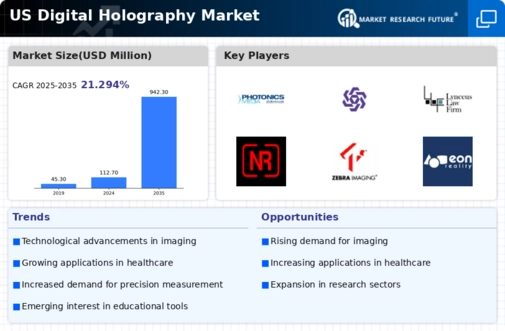The competitive landscape of the US Digital Holography Market has evolved significantly, driven by advancements in technology and increasing demand across various sectors such as healthcare, telecommunications, and entertainment. Digital holography has the potential to transform how data is captured and processed, enabling highly detailed imaging and rendering capabilities that traditional methods cannot achieve. As the market grows, numerous players are vying for a competitive edge, focusing on innovation in product development, strategic partnerships, and expanding their service offerings.
Competitive insights highlight the dynamic nature of the market, where companies are leveraging their technological advancements to enhance performance and meet the preferences of diverse customer segments while addressing regulatory challenges and ensuring compliance. Photonics Media has established a notable presence in the US Digital Holography Market, primarily focusing on high-quality publication and information dissemination in the field of photonics and imaging technologies. The company’s strengths lie in its vast network and authority within the photonics community, enabling it to provide critical insights, market trends, and product innovations that cater specifically to professionals involved in digital holography.
Photon Media excels at creating value through its comprehensive educational resources and events that support knowledge sharing among industry stakeholders, enhancing collaboration and promoting advancements in digital holography applications. Their strong market visibility and reputation help drive awareness and adoption of holography technologies within the US.HoloWorld has carved a distinct niche in the US Digital Holography Market, offering a range of key products and services that emphasize high-resolution imaging and visualization capabilities. The company is recognized for its innovative holographic display solutions that facilitate immersive experiences across multiple sectors, including medical imaging, industrial inspection, and entertainment.
HoloWorld's market presence is strengthened by its robust research and development efforts, which aim to continually enhance their product offerings and introduce cutting-edge solutions. Additionally, the company has engaged in strategic mergers and acquisitions that bolster its technological capabilities and market footprint, enabling it to quickly adapt to the evolving digital landscape. By focusing on customer-centric solutions and operational excellence, HoloWorld continues to solidify its position as a formidable player in the US Digital Holography Market, fostering growth and advancement in holographic technologies.

















